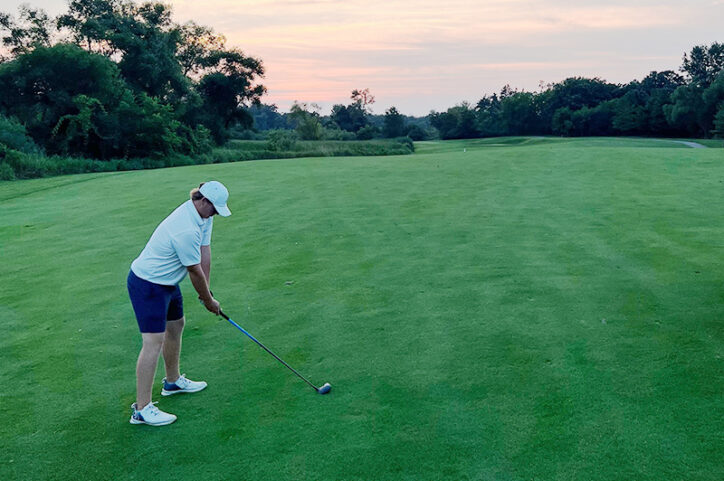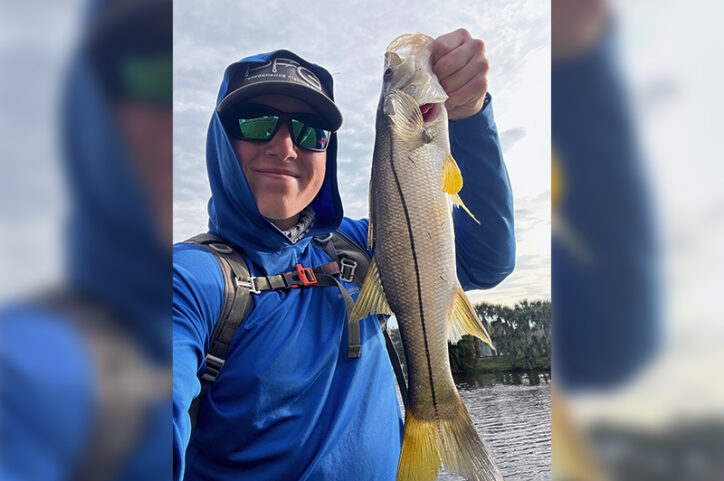New possibilities: How Caden learned to manage chronic pain — and found an unexpected path

In October 2020, Caden Deutsch started feeling sick. Although the 17-year-old had been coping with juvenile idiopathic arthritis since he was in sixth grade, this was different. By the following year, what had begun as brief episodes of gastrointestinal discomfort had progressed to constant, excruciating pain.
“I’d been living with chronic joint pain for years, but it never stopped me,” he says. “But I wasn’t used to this. It flipped my world upside down.”
Pain, frustration, and a second opinion
By his junior year of high school, Caden was in so much pain that he could only take remote classes and had to stop playing sports. Previously an honors student and athlete, he could barely make it through the day. Although he and his mother, Gina, loved the rheumatologist at his local children’s hospital in Chicago, who he still sees today, they weren’t getting the answers they needed from the gastroenterologists there.
“When all of Caden’s tests came back ‘normal,’ he was made to feel like the pain was in his head,” says Gina. “But we just knew something wasn’t right.” That instinct ultimately led the family to pursue a second opinion from Dr. Samuel Nurko, director of Boston Children’s Motility and Functional Gastrointestinal Disorders Center.

Getting a ‘software’ reboot
As soon as he and his mom met Dr. Nurko, Caden started to feel relieved. “His explanation was amazing: he told me the pain was real. He then compared me to a computer and said that structurally, my body’s ‘hardware’ was fine, which explains why all the tests are normal. But we needed to reboot my ‘software’ to retrain my brain and nervous system.” Dr. Nurko diagnosed Caden with a disorder of gut-brain interaction and recommended that he be seen in the hospital’s Pediatric Pain Rehabilitation Center, an intensive day program for children and teens with chronic pain that hasn’t responded to other treatments.
Because of the time commitment needed for the program from both kids and parents, Gina and Caden relocated to Boston for seven weeks. At first, Caden felt uncertain and worried. “I just couldn’t believe that I would be able to go from not getting out of bed to spending eight hours a day at the PPRC,” he says. But his perspective began to shift when he met the other kids in the program. “I had spent the past year and a half feeling like an oddball because of the pain. Meeting five other kids in the same situation gave me a sense of comfort. It was my first glimpse of hope.”

Finding support for mother and son
The experience wasn’t always easy: In addition to seeing Dr. Navil Sethna, the program’s clinical director, Caden also had frequent group and individual sessions of physical, occupational, recreational, and talk therapy — all part of the PPRC’s multidisciplinary approach to chronic pain. He especially found benefit from working with occupational therapist Shealyn O’Donnell, who showed him how to manage his reaction to episodes of GI pain by bouncing a tennis ball in the hallway. “As an athlete, I really gravitated to that,” he remembers.
Likewise, Caden appreciated his therapy sessions with psychologist Caitlin Conroy. “Talking to her felt different from other therapists I’d seen,” he says. “It was more like we were having conversations about my life, not just the pain.”
Gina echoes the sentiment and says she found comfort in the PPRC’s caregiver therapy sessions. “I felt bad at first, like I was taking up their time,” she admits. “But Katie Staines, the social worker who only worked with parents, reminded me that it was her job to be there for me, too. She helped me understand how to support Caden at a time when our family was going through a lot.”
Pursuing a new dream
Now 20, Caden says his experience at the PPRC was life-changing — in more ways than one. In addition to learning how to manage his pain, he decided to take a gap year after high school to work. Where he once believed he would follow in his older brother’s footsteps and apply to four-year colleges, the time off helped him realize that he has a different dream: to become a paramedic.
“It wasn’t the path I expected, but it’s what I really want to do,” he explains. “Once I got sick and went through the PPRC, I fell in love with the idea of helping other people and giving back. It opened new possibilities and ended up being one of the best decisions of my life.”
Learn more about the Pediatric Pain Rehabilitation Center.
Related Posts :
-

‘It’s worth it’: Dianna finds support in managing her chronic pain
For Dianna Aguiar, 18, playing tennis, practicing yoga, and going for walks with her dog aren’t just fun ways to ...
-

‘Worth the trip’: Aiden and his family found help for chronic pain in Boston
Aiden Kozak loves playing volleyball — and he’s good at it. He was even recently named one of the top 50 ...
-

Interventional techniques help Molly thrive with chronic pain
Molly McGowan loves baking, sewing, and taking daily walks in the woods with her goldendoodle, Cooper. But Cooper isn’t ...
-

No longer just 'getting through the day': Addressing Lucie's chronic pain
Lucie Robert had always been an engaged and active kid: At just 10 years old, she loved Nordic skiing, dancing, and ...





